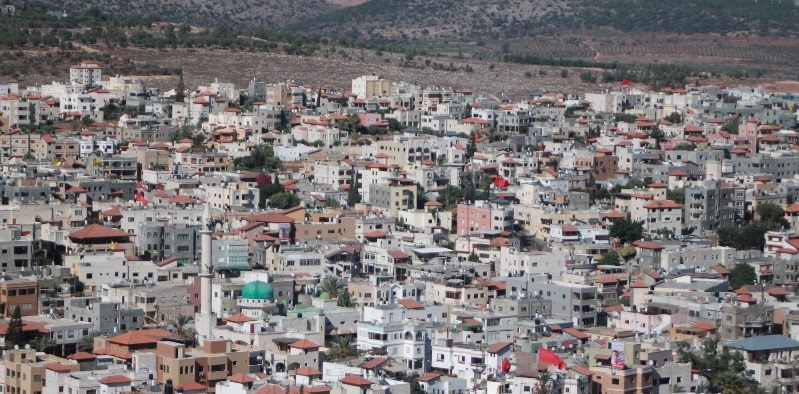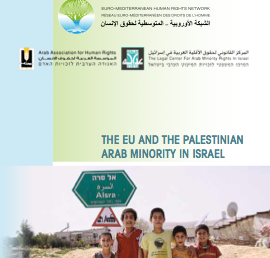New data on 39th Land Day: Gross housing discrimination continues against Palestinian citizens of Israel

On the 39th Land Day, on 30 March 2015, Adalah released a new study on the State of Israel's policy of land allocation towards the Palestinian Arab citizens of Israel. Adalah gathered official statistics on all marketed tenders (bids) for land and housing units published by the Israel Land Authority (ILA) during the year 2014.
The data reveals that the ILA continued to discriminate against Arab citizens of Israel in various fields, violating their basic rights to housing, property, employment, equality and others. The data also showed the wide discrimination between Israel's land allocation to the Arab citizens, who constitute 1.2 million people or 20% of the state's population, and illegal Israeli Jewish settlements in occupied territory (the West Bank including East Jerusalem, and the Golan Heights), who number 550,000 people.
Adalah Attorney Myssana Morany and legal apprentice Mohammed Bassam, who analyzed the data, found that in 2014, the ILA published tenders for the construction of 38,261 housing units in total (not including mixed cities). Out of this number, only 1,844 housing units were published in Arab communities in Israel – meaning that 20% of Israel's population was receiving only 4.6% of new housing units from the state.
In addition, in 2014, Israel published tenders for the construction of 36 industrial zones in Jewish communities, 5 of which were in settlements; no tenders for industrial zones were published for Arab communities. In total, from 2009 to 2014, the ILA published only 13 tenders for industrial and commercial zones in Arab communities, compared to 328 tenders in Israeli Jewish communities.
Settlements receive 4 times as many new houses as Arab communities
In 2014, the ILA published tenders for 3,163 housing units in Jewish settlements in the Occupied Palestinian Territory (OPT), compared to 1,844 housing units in Arab communities in Israel, despite the Arab population being double that of the settlement population. The ratio of marketed units to residents is thus 1:173 in settlements, compared to 1:650 in Arab communities – four times the ratio.
The data further indicated that the ILA's discriminatory policies were widening the gap in housing between the Arab communities and the Jewish settlements through its unequal land allocation. While the number of housing units marketed in Jewish settlements in the OPT in 2014 decreased by 18% compared to the previous year (3,883 units in 2013), in Arab communities the number drastically dropped by 48% (3,547 units in 2013), even though the Arab population is twice that of the settlement population.
Final expropriation of Palestinian refugee properties
The data also showed that in 2014, the ILA sold 77 properties belonging to Palestinian refugees, which is illegal under international law. Adalah revealed in 2009 that Israel had begun selling the properties and assets of Palestinian refugees, and demanded that it immediately be halted. Adalah sent an appeal to the Director of the ILA stating: "The selling of these assets is a final expropriation of the rights of Palestinian refugees to their properties, despite the special status of these assets legally, historical and politically." From 2007 to 2014, Israel's policy led to the selling of over 800 refugee properties.
Adalah Attorney Myssana Morany commented on the data stating that: "Although the state of Israel has already expropriated millions of dunams of land and properties from Palestinian Arabs since its establishment, it is continuing to carry out its racist and discriminatory policies. The data shows that the mass majority of Israel's land and housing units are specifically allocated for the benefit of Jewish citizens only. It explains why the major housing shortage in Arab communities has been so difficult to address, and why many Arab families are in a dire social-economic situation."
See Adalah’s previous study on land discrimination in 2013, 30 March 2014

















